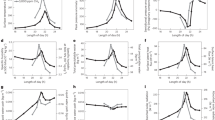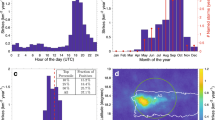Abstract
IF the maximum of this meteor shower should occur when the earth is in the same position with regard to the sun as was formerly the case, it would take place in the daytime of January 3, 1911, but this shower does not seem to have been sufficiently watched of late years to ascertain when the maximum now occurs. There is, however, some reason to believe that it will not be until the evening of January 3, in which case, as there is no moonlight, it would be a very favourable opportunity for its observation in this country. As the maximum is of short duration it ought to be more extensively watched for annually than appears usually to be the case.
This is a preview of subscription content, access via your institution
Access options
Subscribe to this journal
Receive 51 print issues and online access
$199.00 per year
only $3.90 per issue
Buy this article
- Purchase on SpringerLink
- Instant access to full article PDF
Prices may be subject to local taxes which are calculated during checkout
Similar content being viewed by others
Author information
Authors and Affiliations
Rights and permissions
About this article
Cite this article
BACKHOUSE, T. The Quadrantid Meteor Shower. Nature 85, 236 (1910). https://doi.org/10.1038/085236c0
Published:
Issue date:
DOI: https://doi.org/10.1038/085236c0



